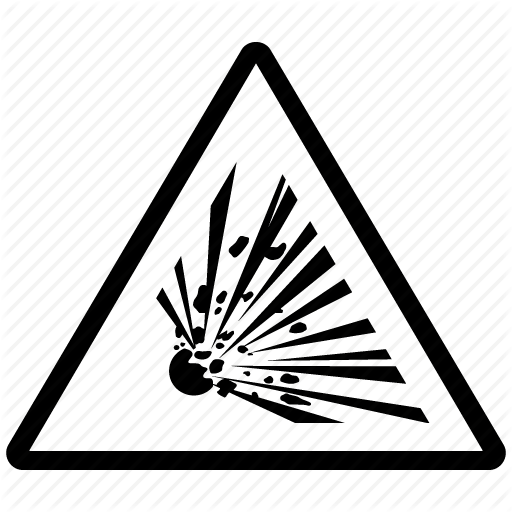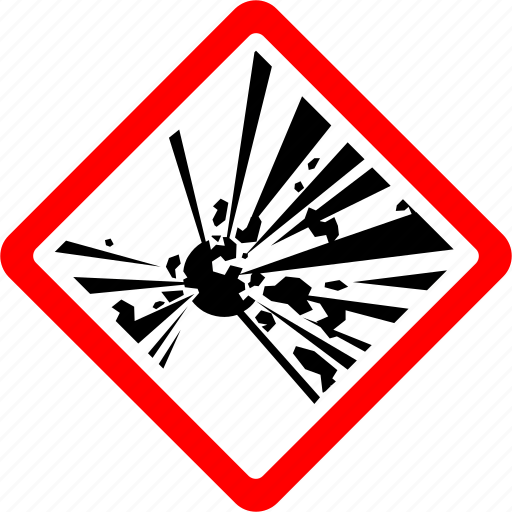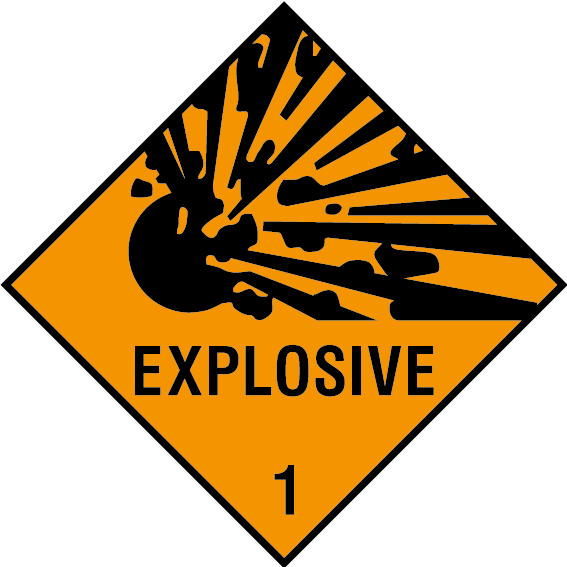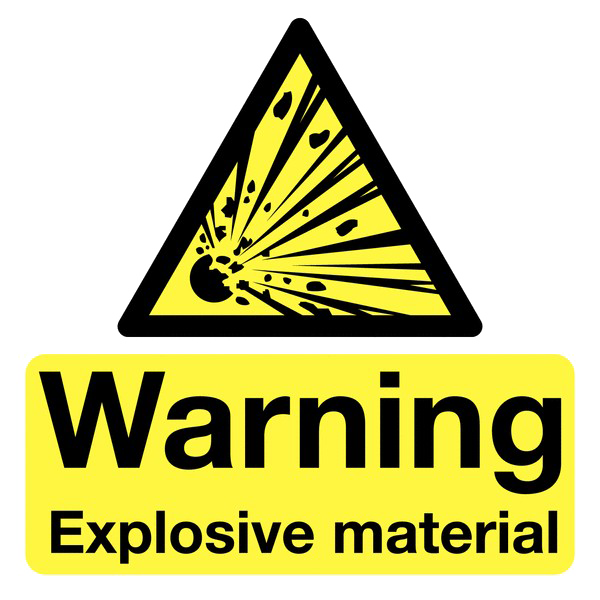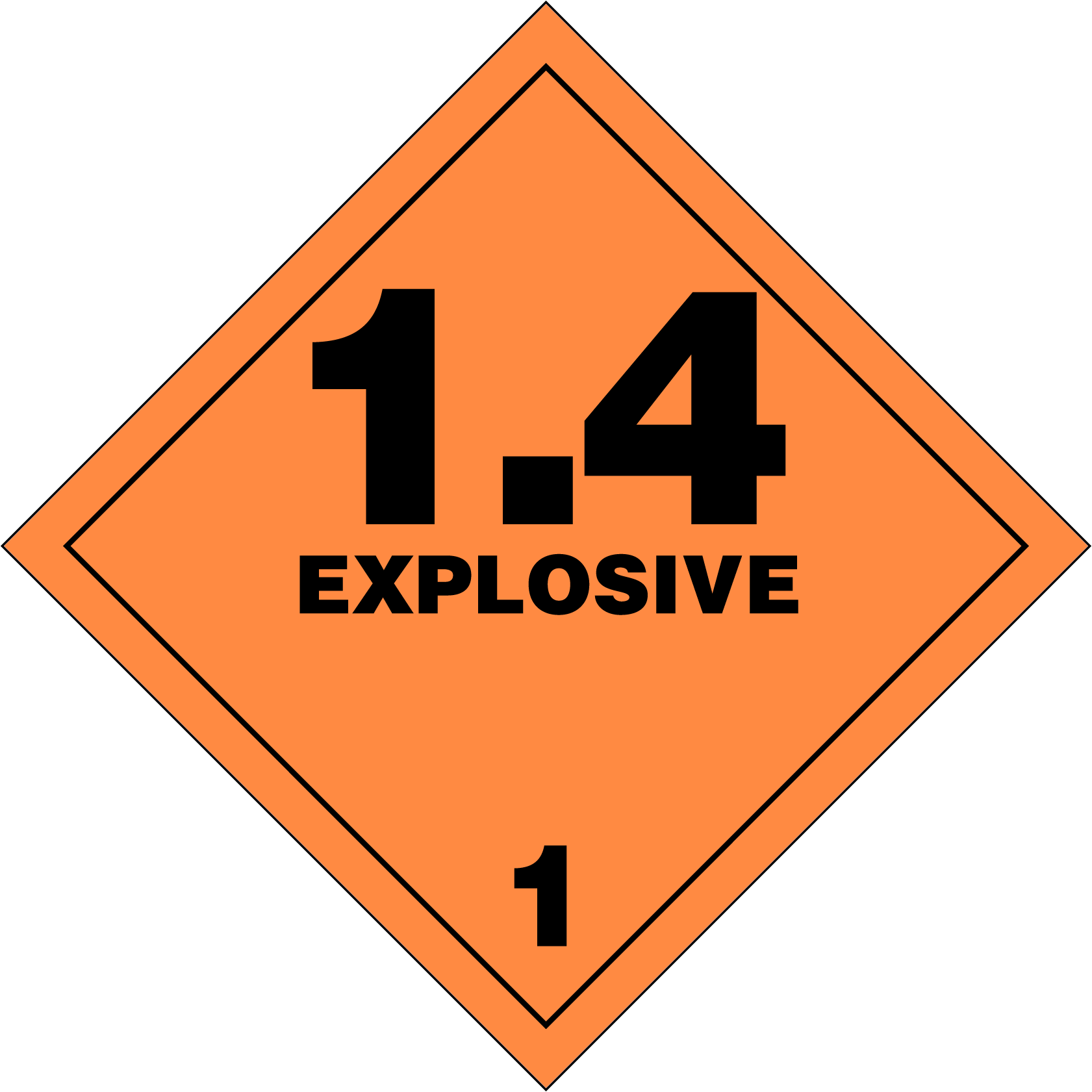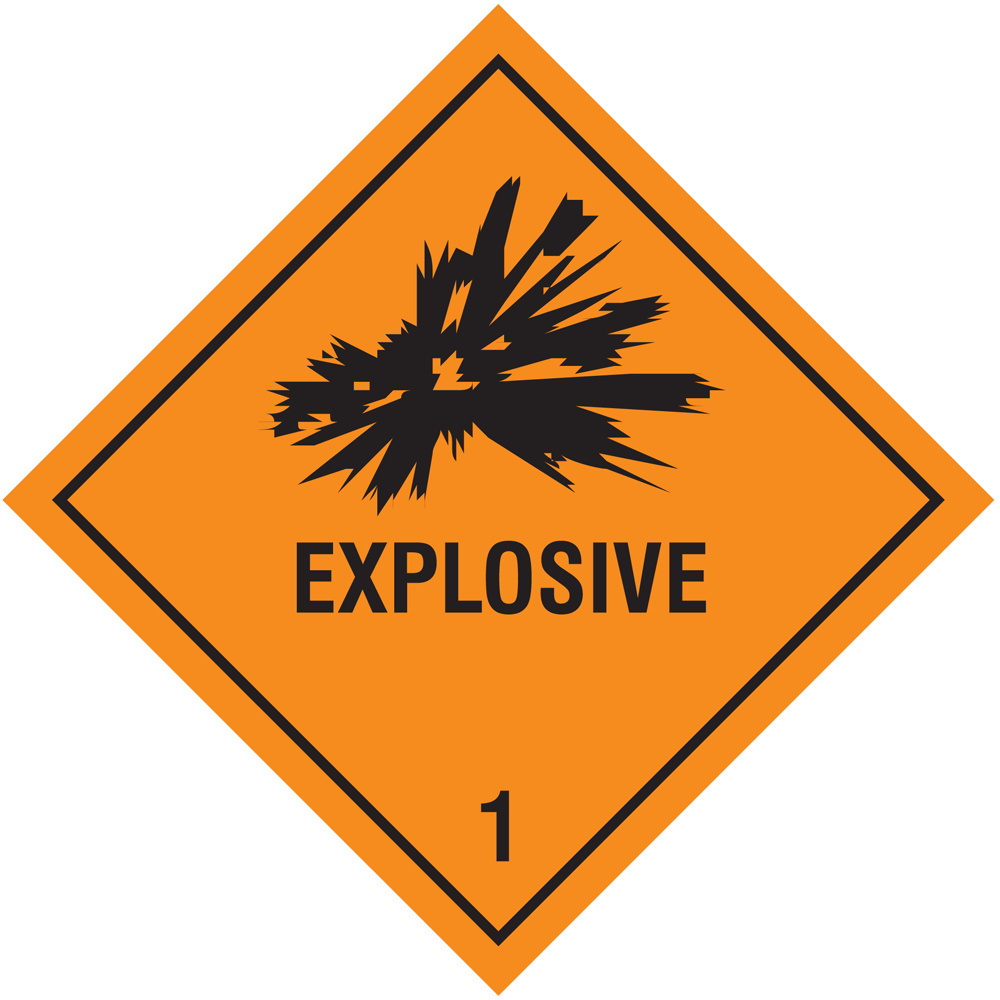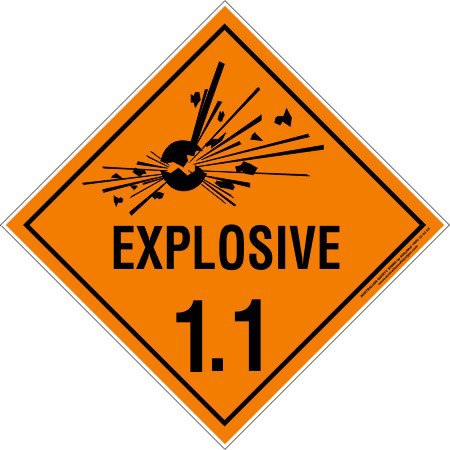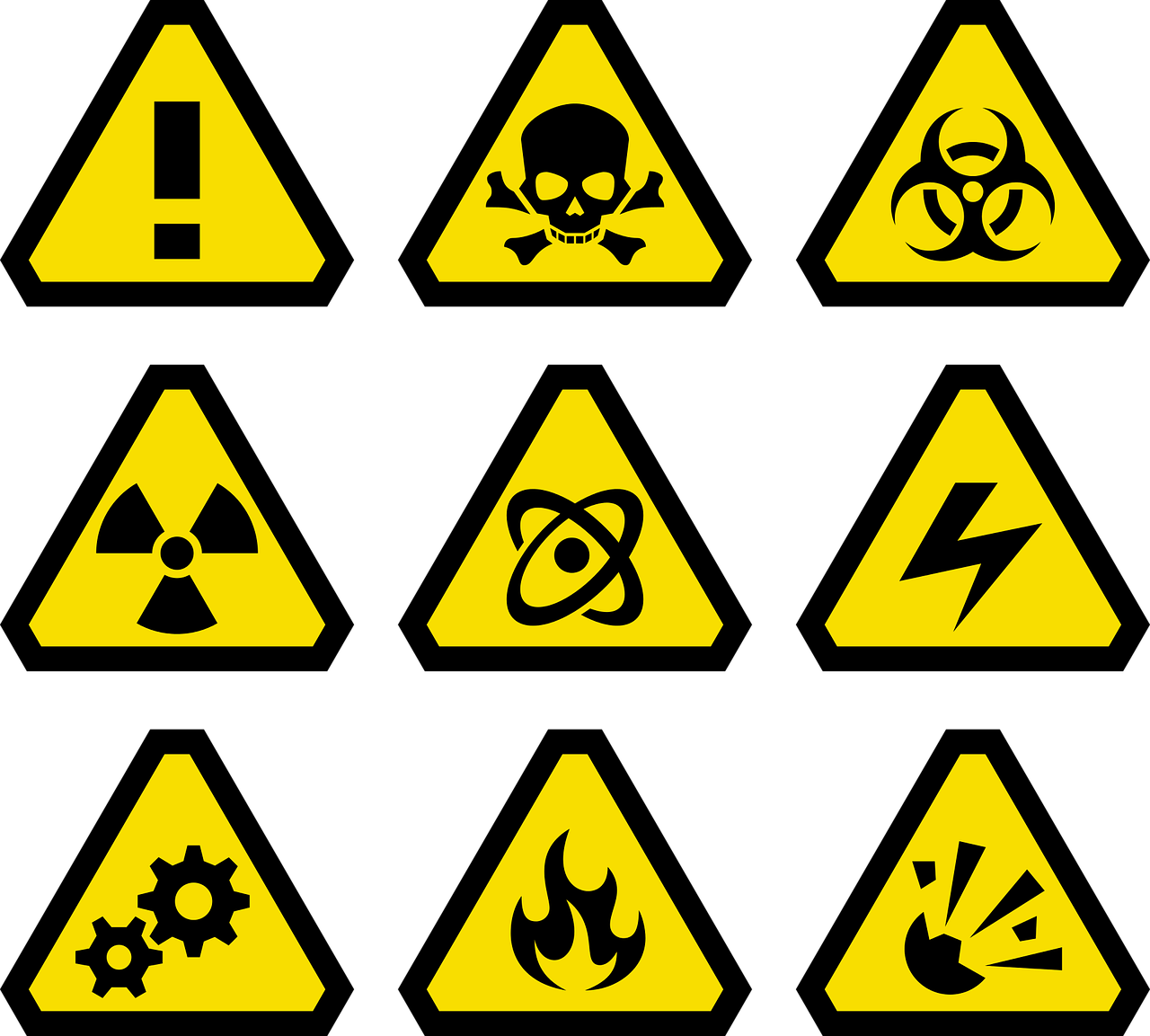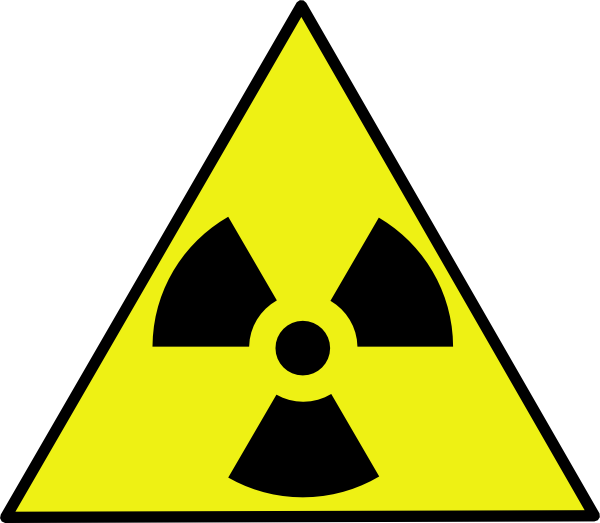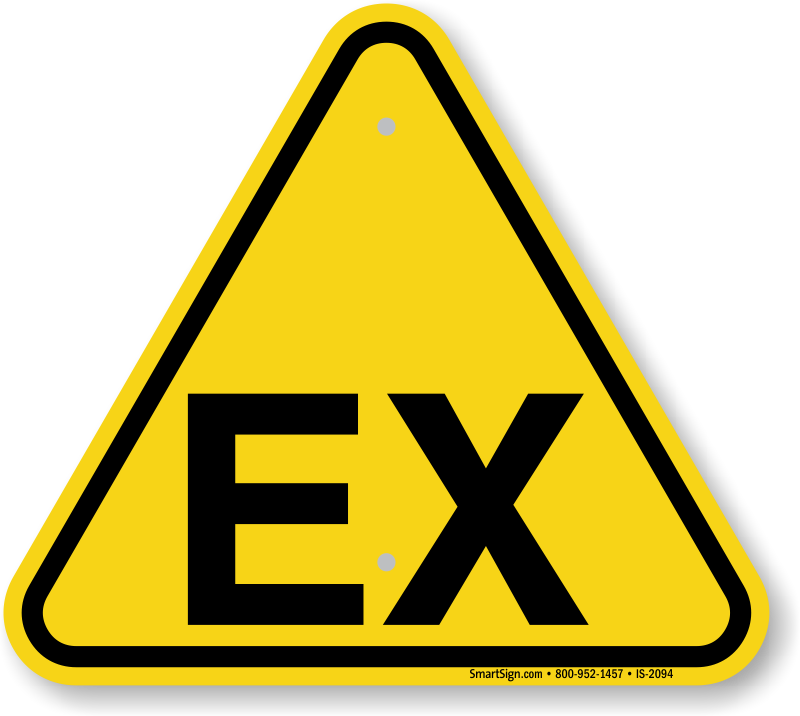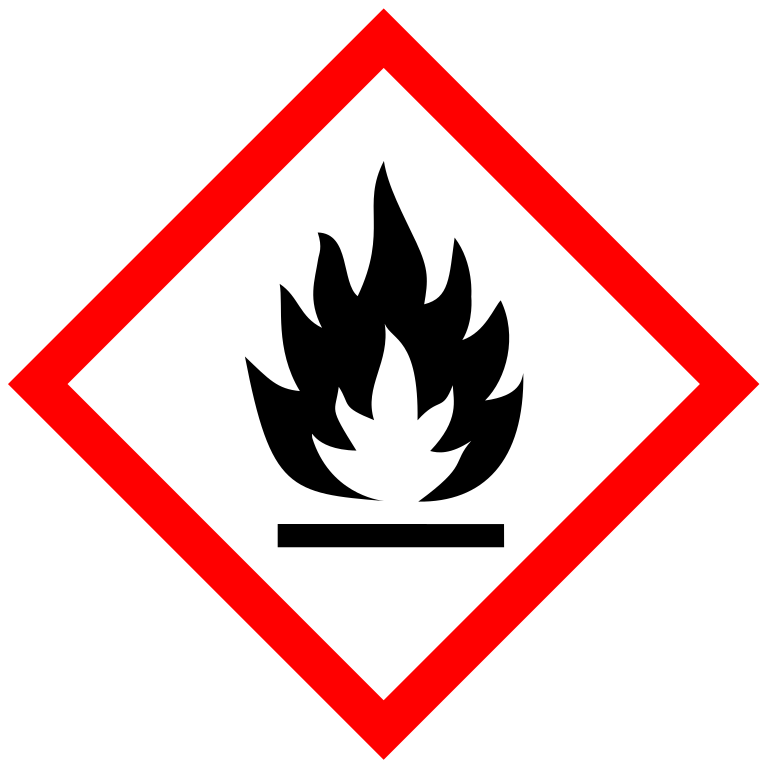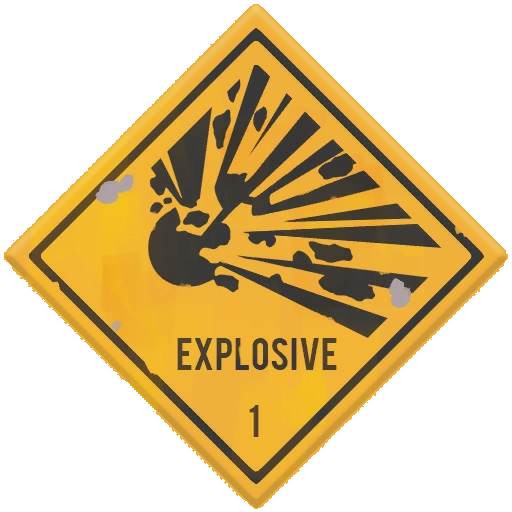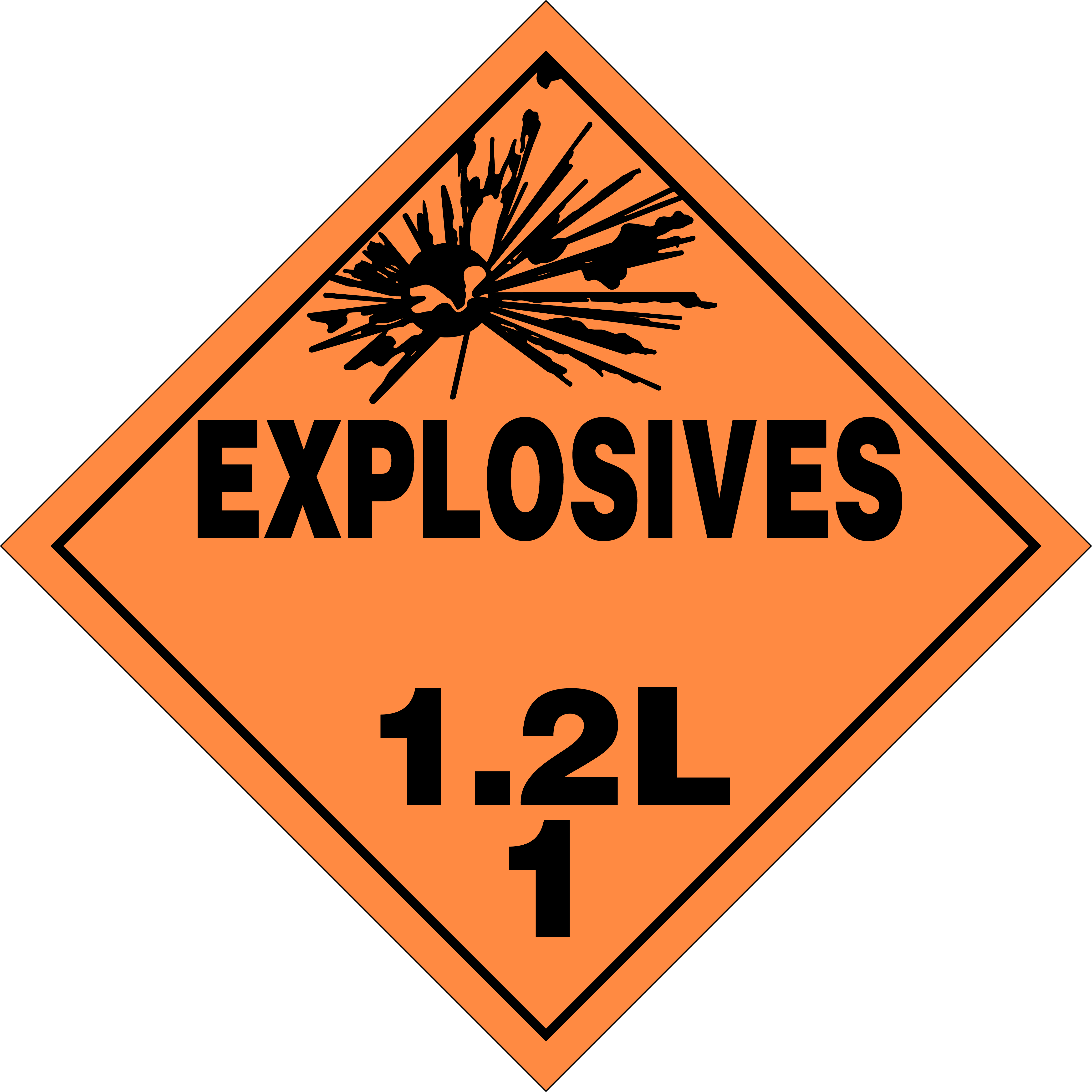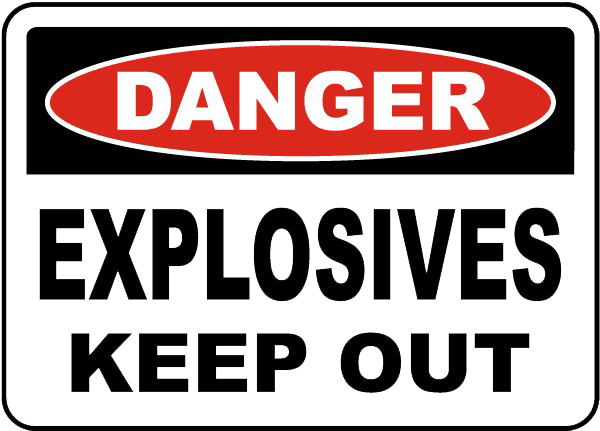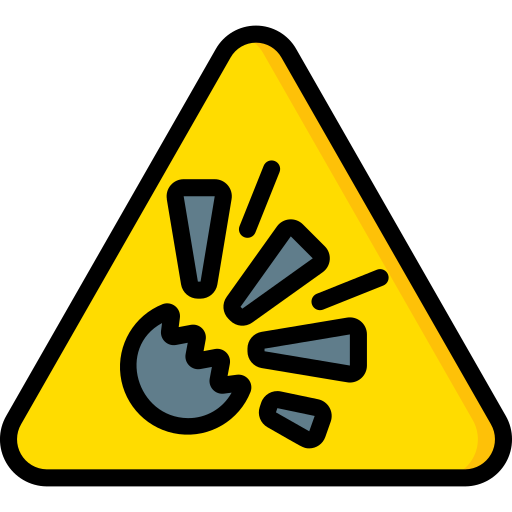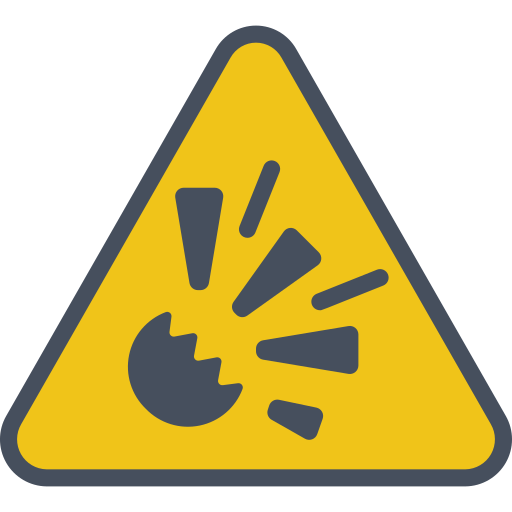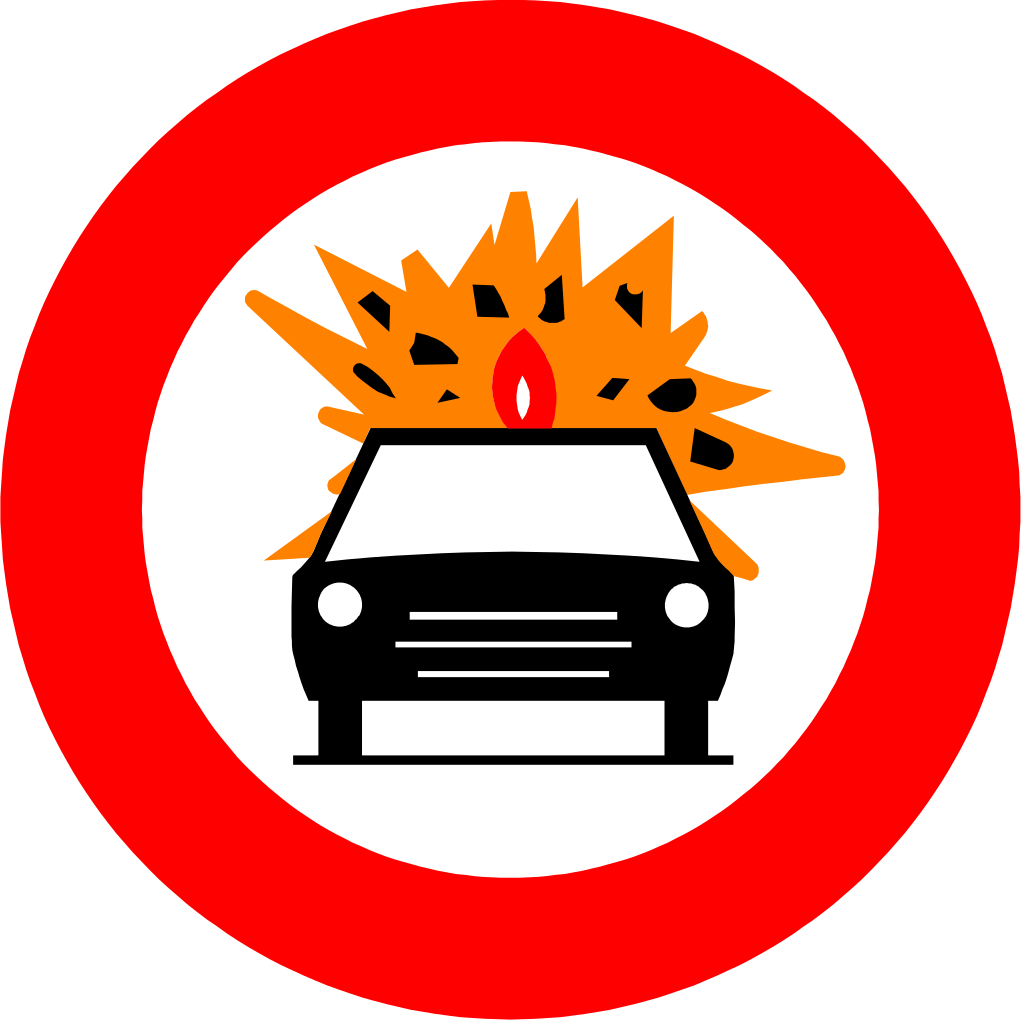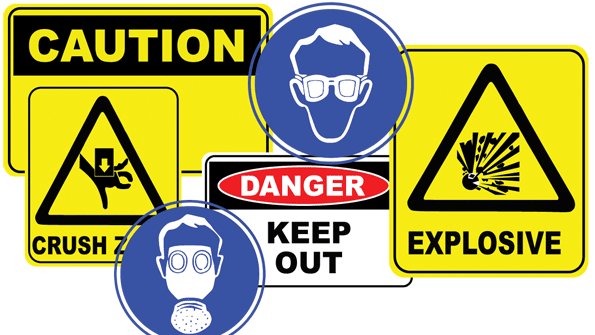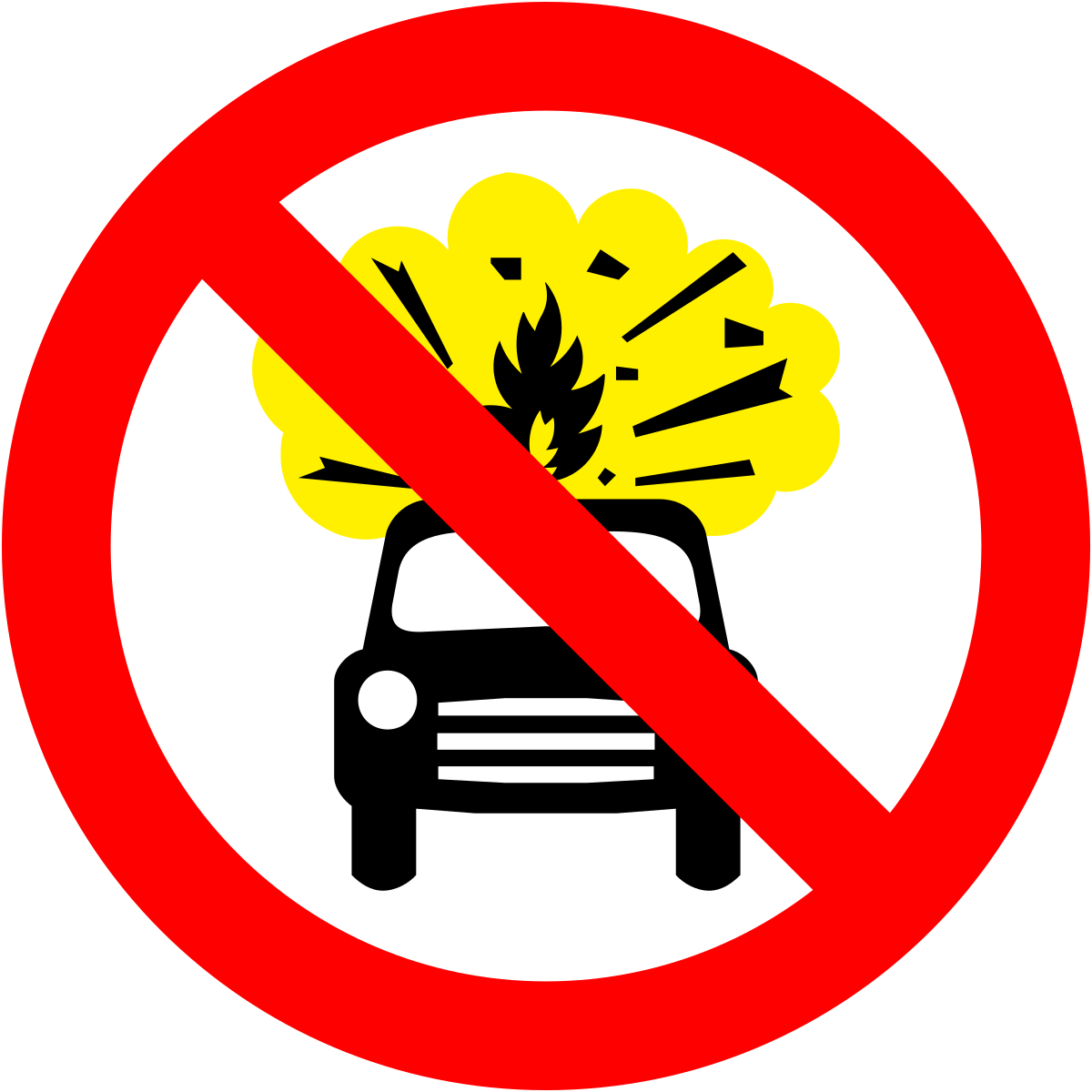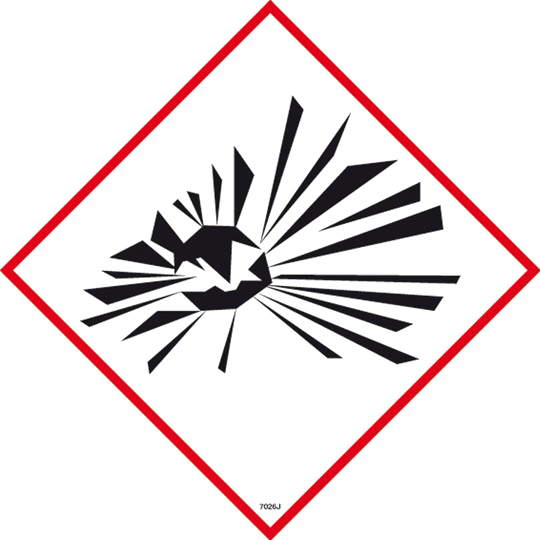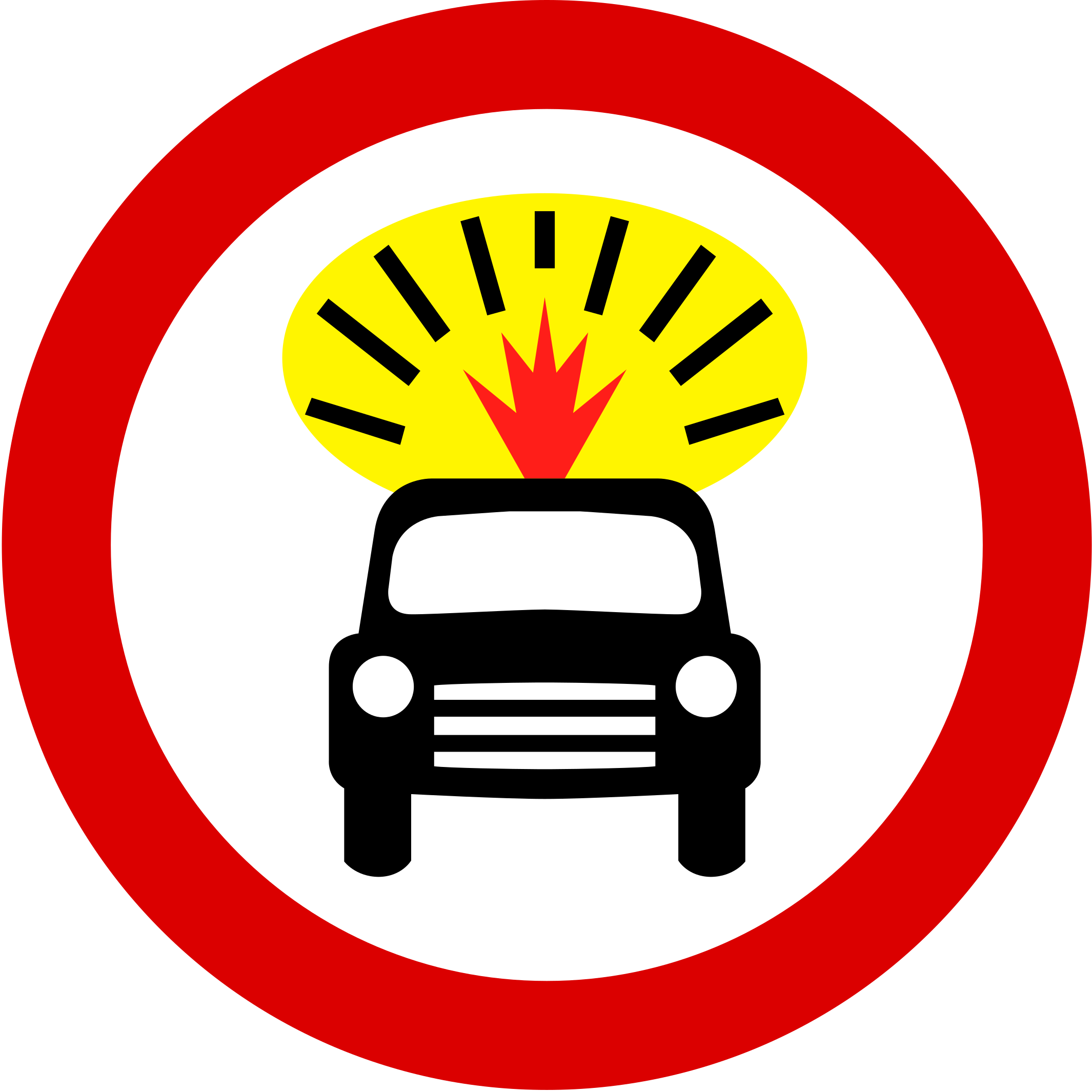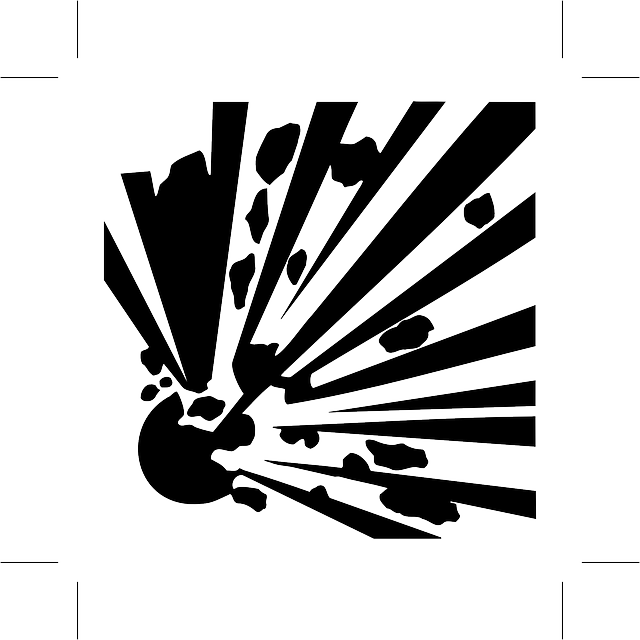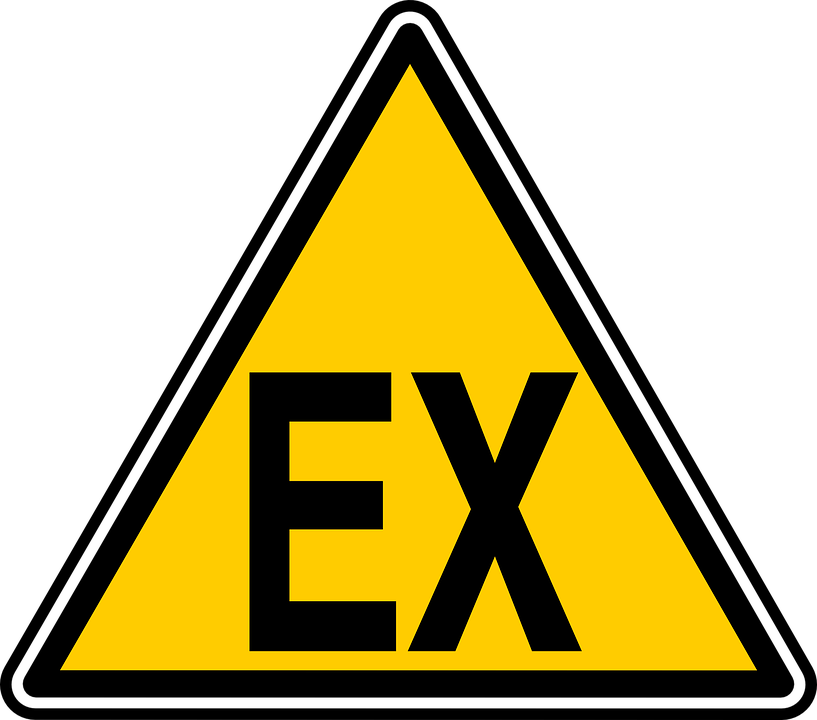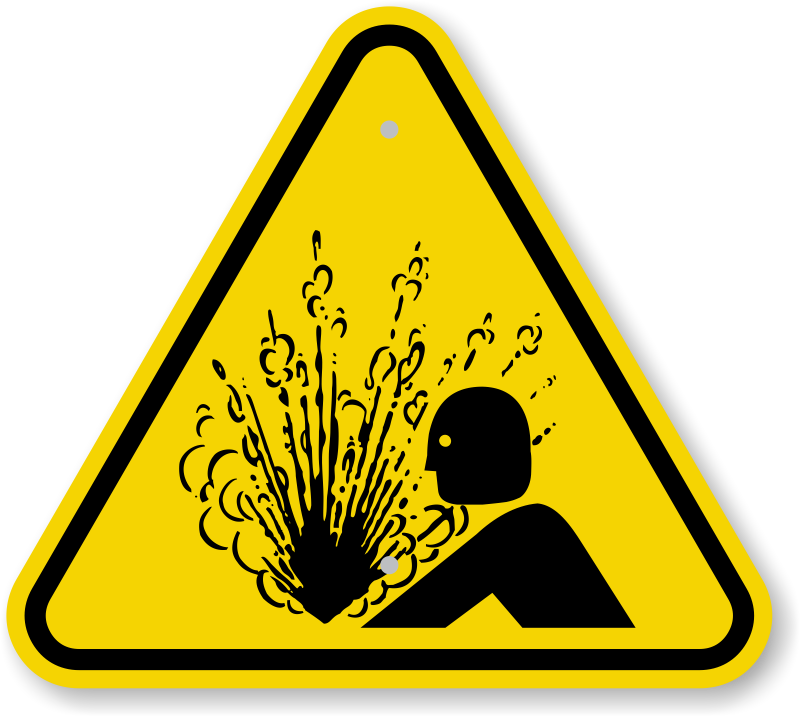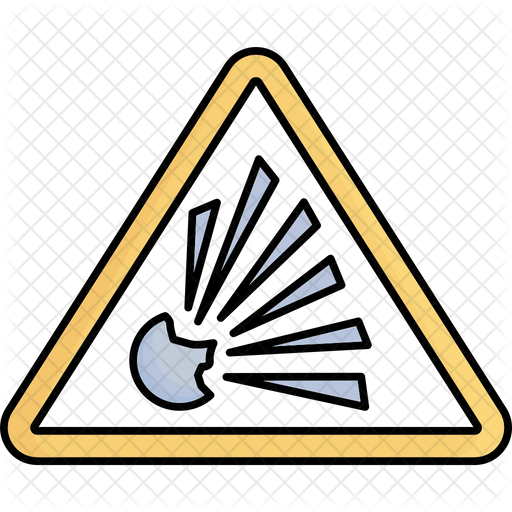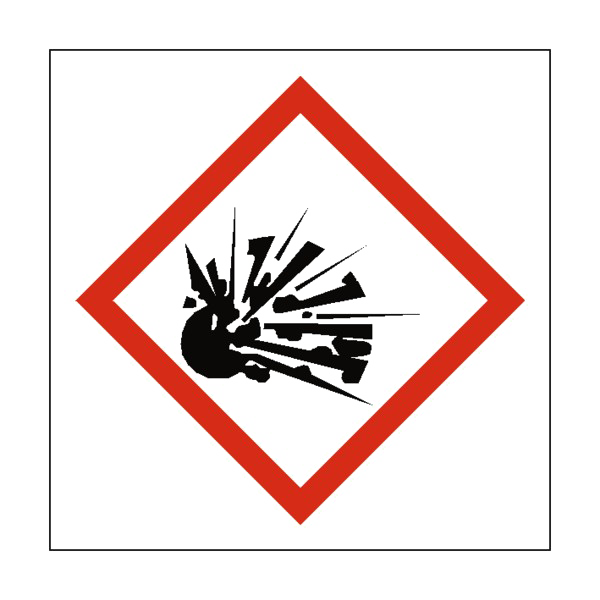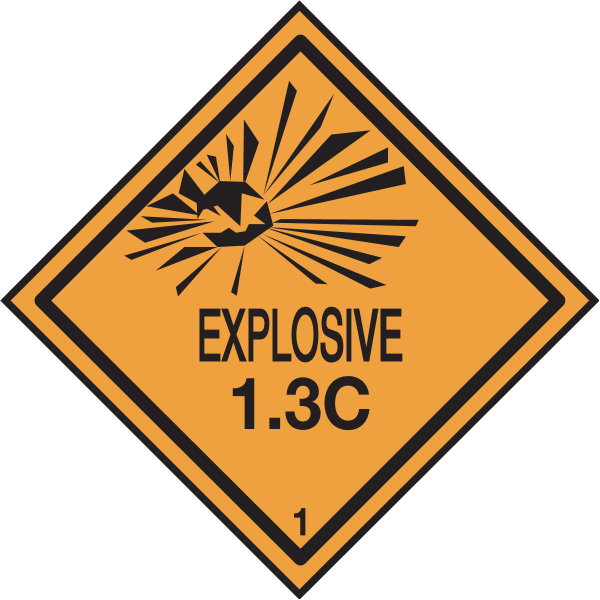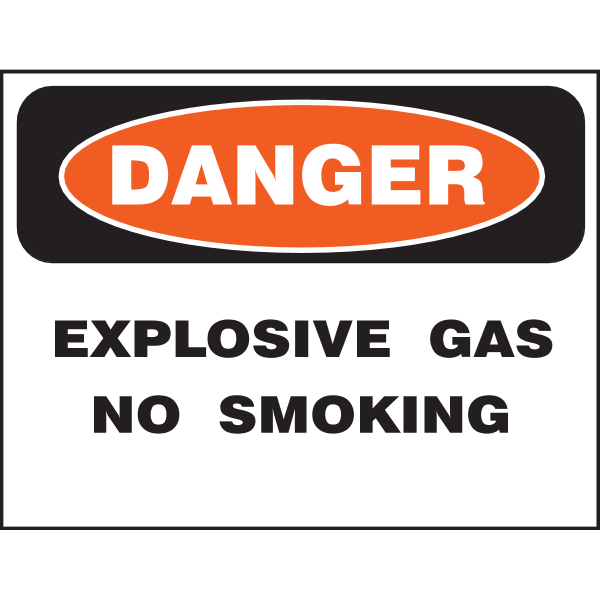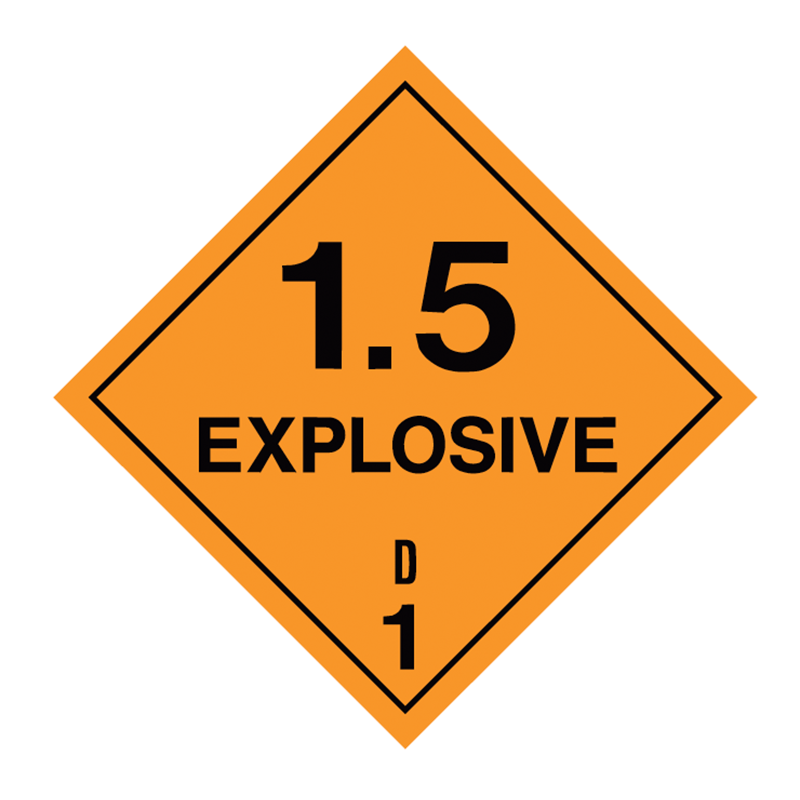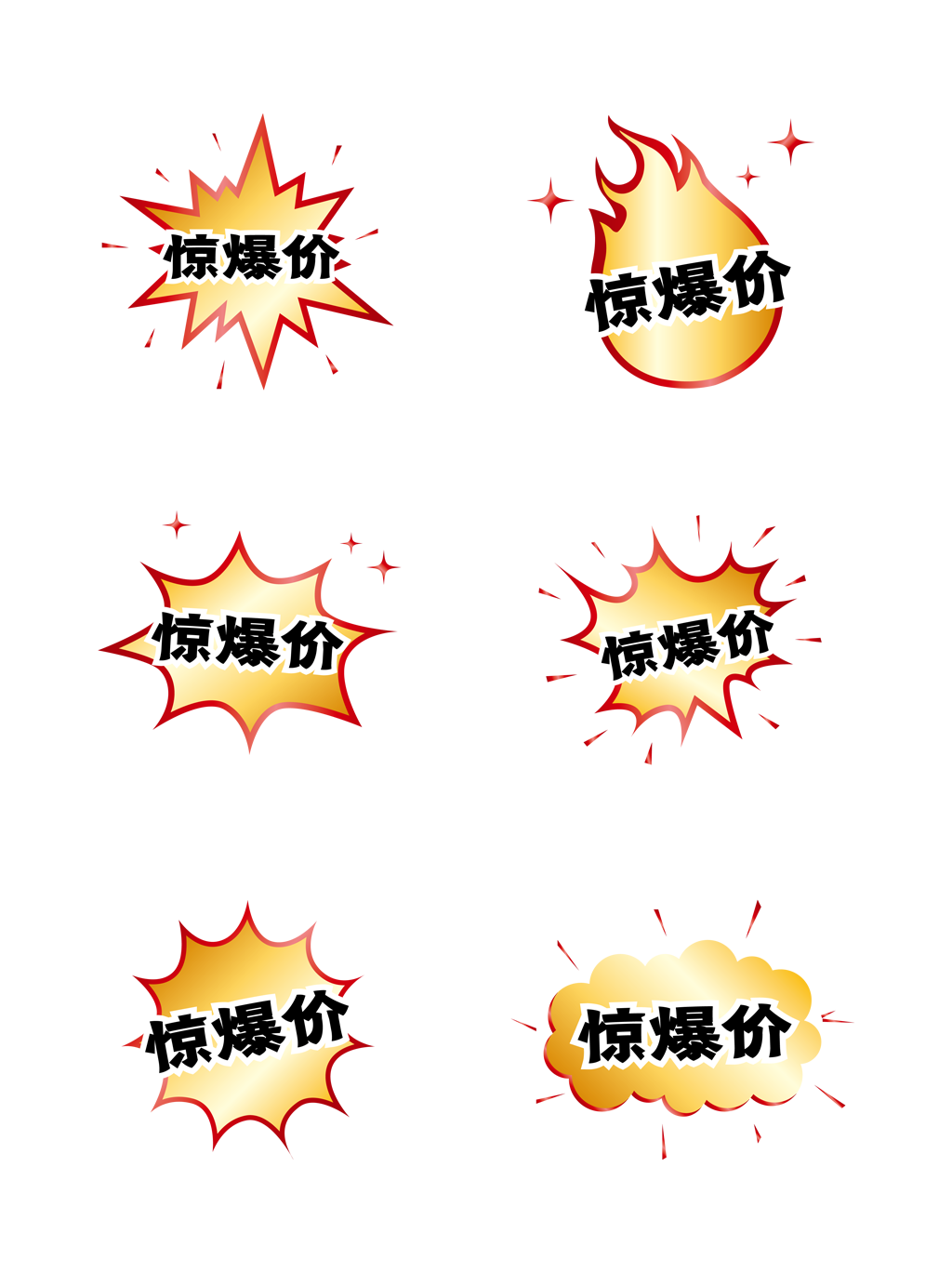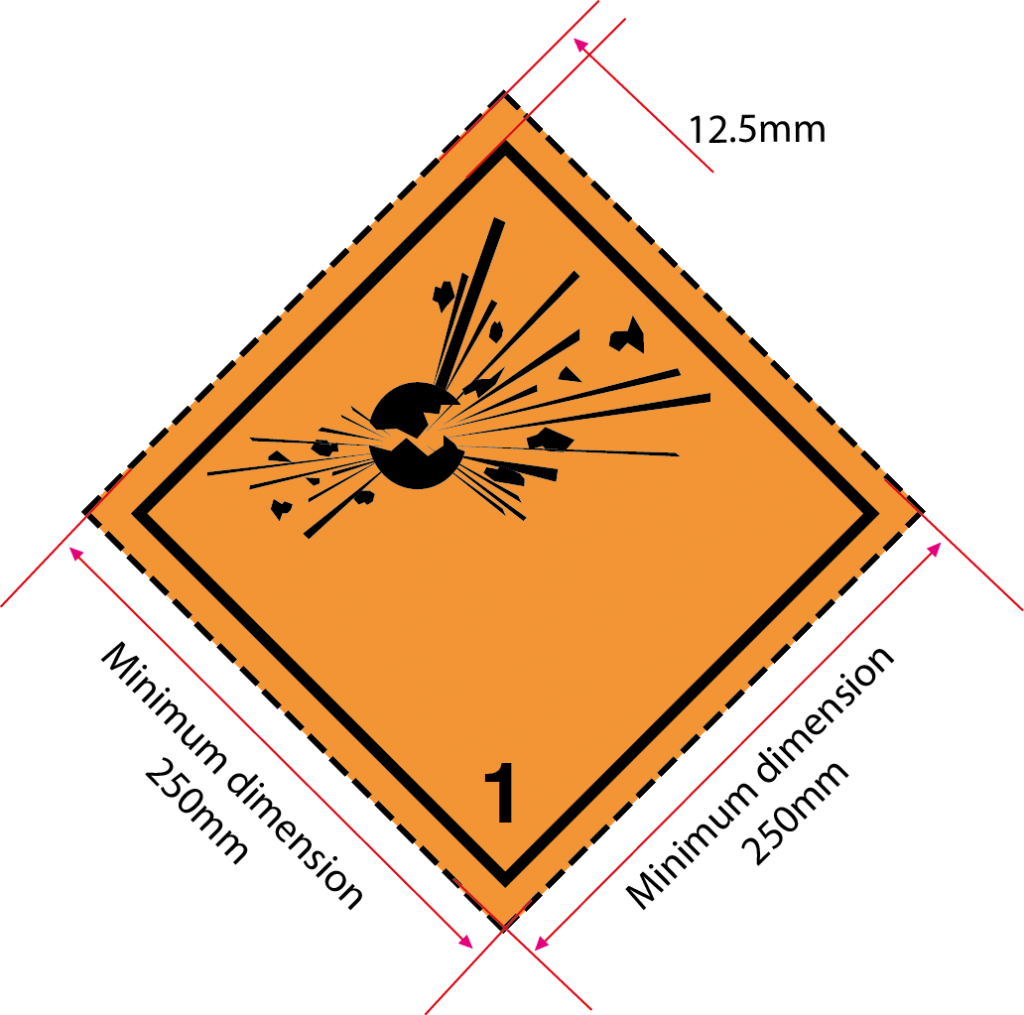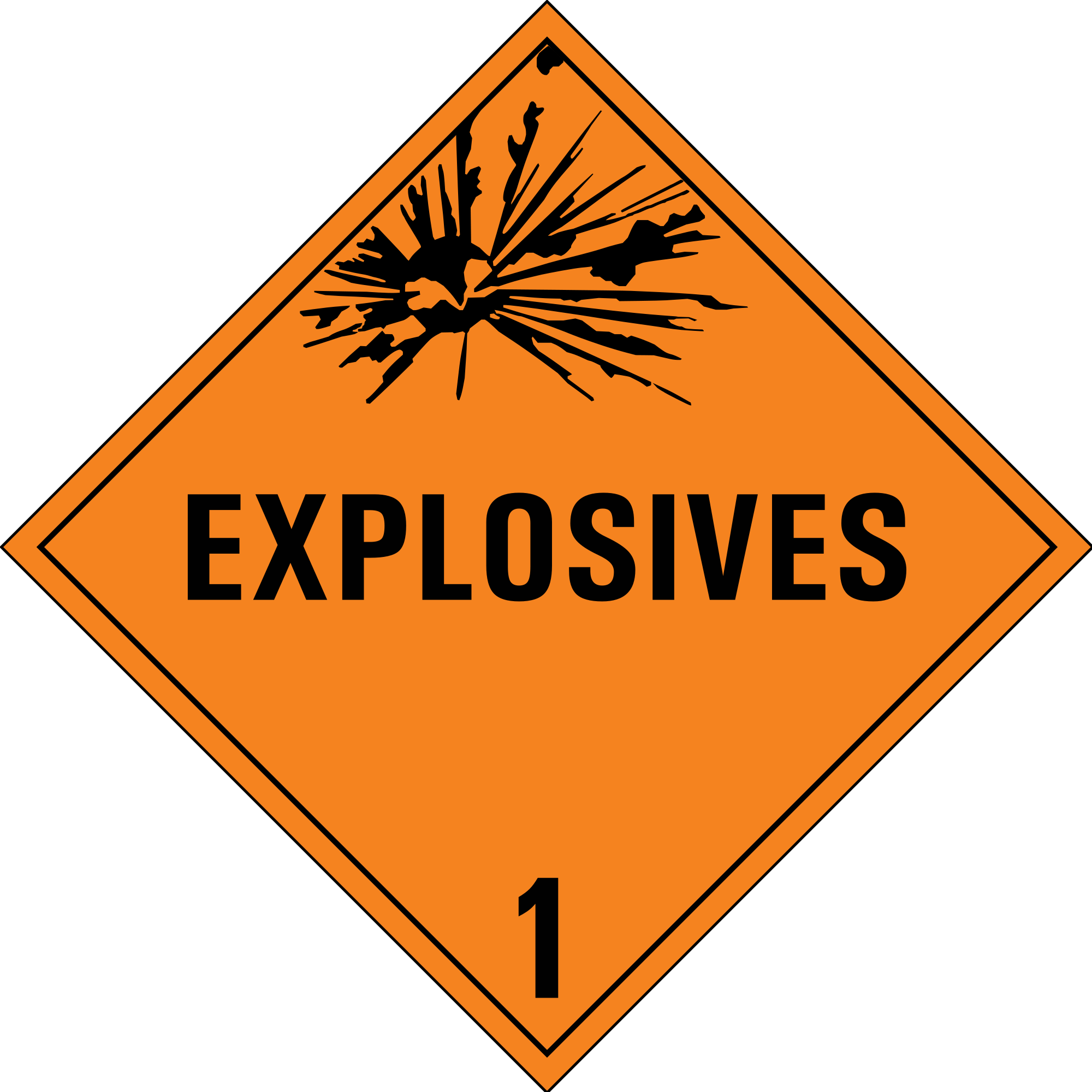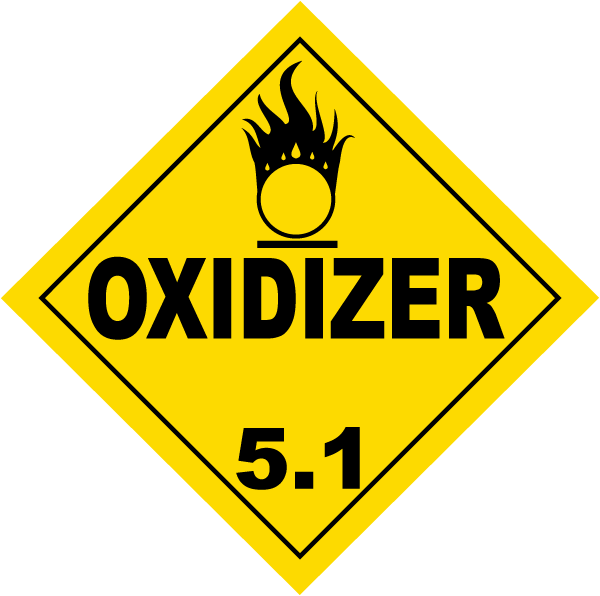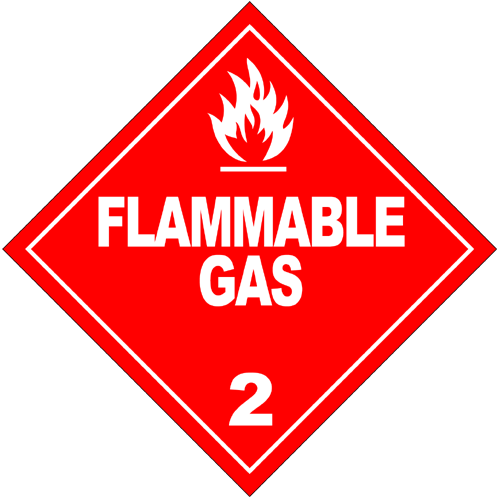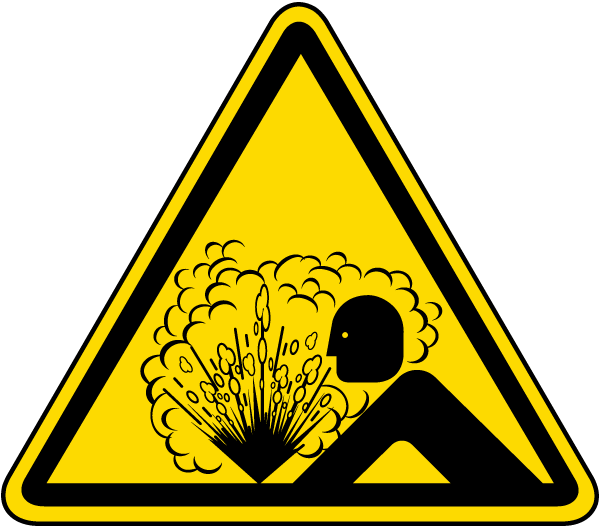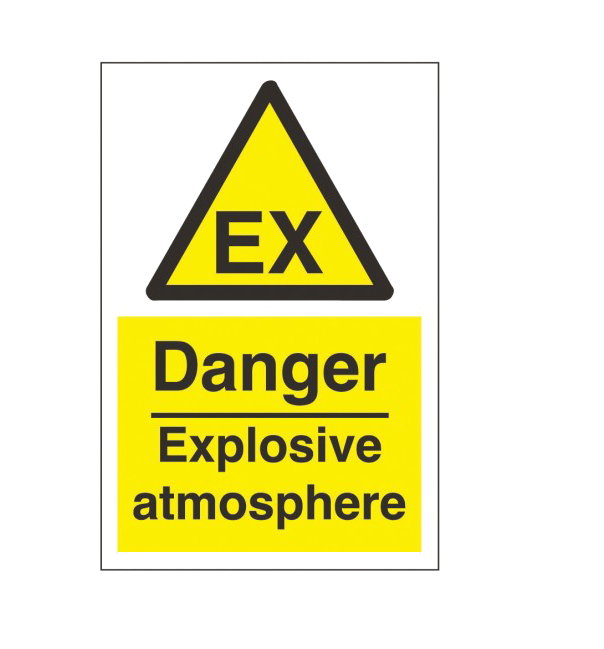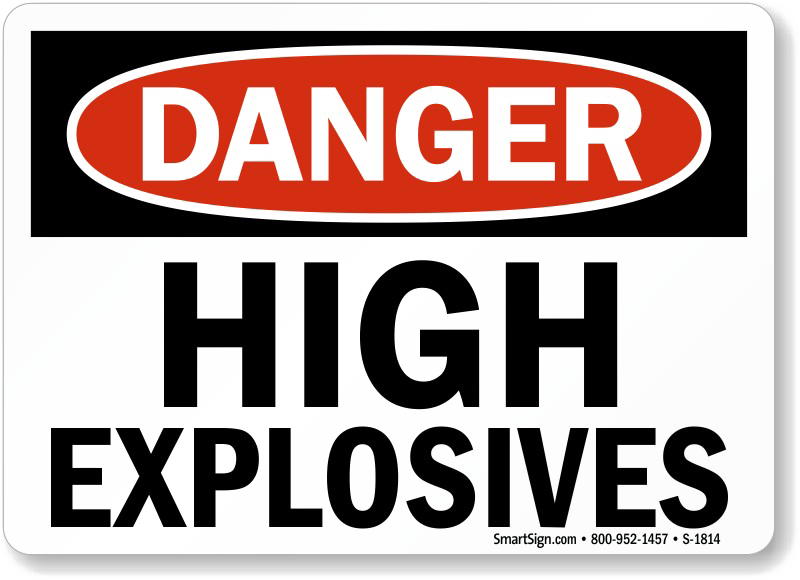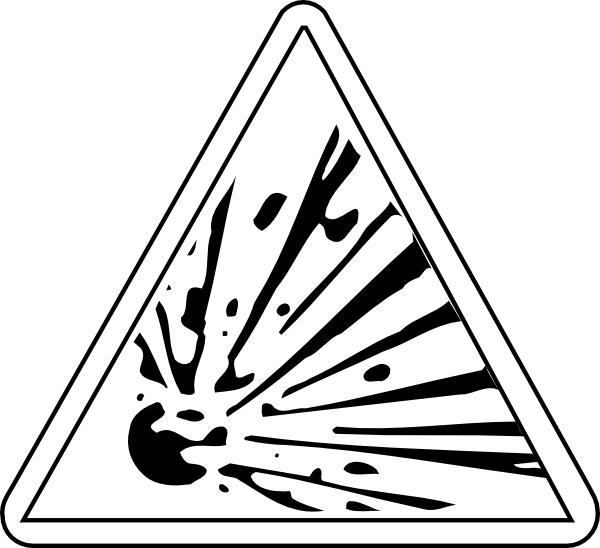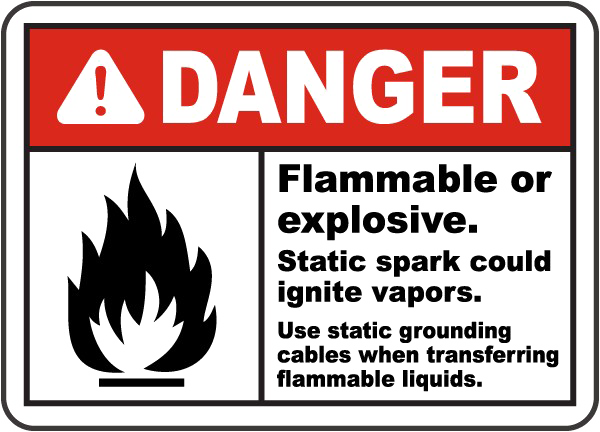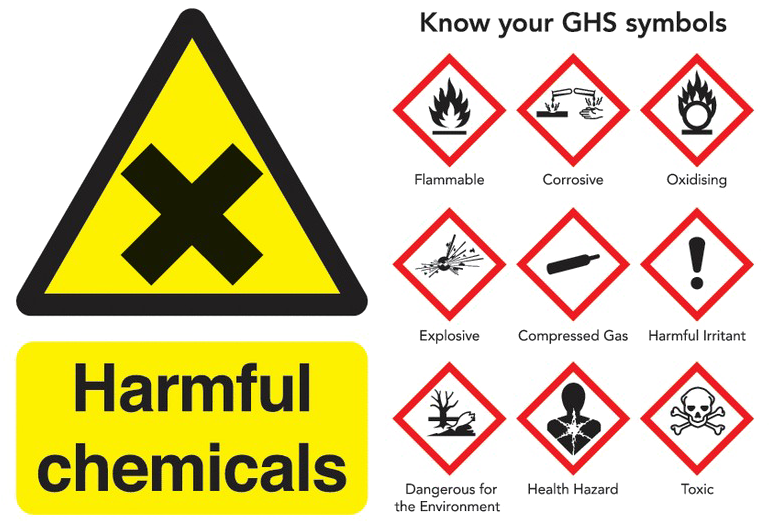Download top and best high-quality free Explosive Sign PNG Transparent Images backgrounds available in various sizes. To view the full PNG size resolution click on any of the below image thumbnail.
License Info: Creative Commons 4.0 BY-NC
An explosive is a reactive chemical with a large amount of potential energy that, when released quickly, can cause an explosion, which is generally followed by the emission of light, heat, sound, and pressure. An explosive charge is a calculated amount of explosive material that can be made up of only one component or a mixture of at least two ingredients.
For example, the potential energy contained in an explosive substance may be nitroglycerin or grain dust are examples of chemical energy. a cylinder of pressurized gas, an aerosol can, or a BLEVE The fissile isotopes uranium-235 and plutonium-239 are examples of nuclear energy.
The rate at which explosive materials expand can be used to classify them. High explosives are those that explode (the front of the chemical reaction proceeds quicker through the material than the speed of sound), whereas low explosives are those that deflagrate. The sensitivity of explosives can also be classified. Primary explosives are highly sensitive materials that may be ignited by a tiny amount of heat or pressure, whereas secondary and tertiary explosives are less sensitive.
A large range of compounds can explode, but only a limited number are designed expressly to be used as explosives. The others are too hazardous, sensitive, poisonous, costly, unstable, or prone to decomposition or deterioration in short periods of time.
Some materials, on the other hand, are only flammable or combustible if they burn without exploding.
The separation isn’t razor-sharp, though. Certain materials, such as dusts, powders, gases, or volatile organic liquids, may be simply flammable or combustible under normal settings, but they can become explosive under particular situations or forms, such as distributed airborne clouds, confinement, or abrupt release.
Thermal weapons dating back to ancient times, such as Greek fire, exist. The history of chemical explosives may be traced back to the history of gunpowder. Taoist Chinese alchemists were anxiously seeking the elixir of immortality during the Tang Dynasty in the 9th century. In the process, they discovered the explosive creation of black powder in 1044, which was created from coal, saltpeter, and sulfur. The first chemical explosive was gunpowder, and by 1161, the Chinese were utilizing explosives in battle for the first time. The Chinese would use bamboo fire crackers, which are explosives fired from bamboo or bronze tubes. Live rats were also incorporated into the bamboo fire crackers by the Chinese; when shot at the enemy, the flame rats caused enormous psychological consequences, frightening opposing soldiers away and causing cavalry forces to charge.
Nitroglycerin, created in 1847, was the first usable explosive stronger than black powder. Because nitroglycerin is a liquid and exceedingly unstable, it was superseded by nitrocellulose, trinitrotoluene (TNT), smokeless powder, dynamite, and gelignite in 1863, 1867, and 1868. (the latter two being sophisticated stabilized preparations of nitroglycerin rather than chemical alternatives, both invented by Alfred Nobel). TNT was first used in artillery projectiles during World War I. New explosives were widely employed during World War II (see List of explosives used during World War II).
As a result, more stronger explosives like C-4 and PETN have essentially supplanted them. C-4 and PETN, on the other hand, react with metal and rapidly catch fire, but unlike TNT, they are waterproof and flexible.
Download Explosive Sign PNG images transparent gallery.
- Triangle Explosive Sign PNG Cutout
Resolution: 512 × 512
Size: 14 KB
Image Format: .png
Download
- Triangle Explosive Sign PNG Images
Resolution: 512 × 512
Size: 36 KB
Image Format: .png
Download
- Explosive Sign Vector PNG Images HD
Resolution: 567 × 567
Size: 24 KB
Image Format: .png
Download
- Explosive Sign Vector PNG Free Image
Resolution: 600 × 600
Size: 223 KB
Image Format: .png
Download
- Explosive Sign Vector PNG Image File
Resolution: 1681 × 1681
Size: 51 KB
Image Format: .png
Download
- Explosive Sign Vector PNG
Resolution: 1000 × 1000
Size: 102 KB
Image Format: .png
Download
- Explosive Sign Vector PNG Pic
Resolution: 450 × 450
Size: 133 KB
Image Format: .png
Download
- Explosive Sign Vector PNG File
Resolution: 1280 × 1153
Size: 238 KB
Image Format: .png
Download
- Triangle Explosive Sign PNG Photos
Resolution: 600 × 523
Size: 28 KB
Image Format: .png
Download
- Explosive Sign Transparent
Resolution: 800 × 716
Size: 74 KB
Image Format: .png
Download
- Explosive Sign Vector PNG Image
Resolution: 768 × 768
Size: 25 KB
Image Format: .png
Download
- Explosive Sign PNG Clipart
Resolution: 512 × 512
Size: 206 KB
Image Format: .png
Download
- Explosive Sign Vector PNG Photo
Resolution: 4582 × 4582
Size: 322 KB
Image Format: .png
Download
- Explosive Sign PNG Picture
Resolution: 600 × 431
Size: 112 KB
Image Format: .png
Download
- Explosive Sign Vector PNG Cutout
Resolution: 512 × 512
Size: 27 KB
Image Format: .png
Download
- Triangle Explosive Sign Transparent
Resolution: 512 × 512
Size: 23 KB
Image Format: .png
Download
- Explosive Sign Vector PNG Images
Resolution: 1024 × 1024
Size: 62 KB
Image Format: .png
Download
- Triangle Explosive Sign PNG Clipart
Resolution: 595 × 335
Size: 129 KB
Image Format: .png
Download
- Explosive Sign PNG HD Image
Resolution: 1200 × 1200
Size: 77 KB
Image Format: .png
Download
- Explosive Sign PNG Image HD
Resolution: 540 × 540
Size: 177 KB
Image Format: .png
Download
- Explosive Sign No Background
Resolution: 512 × 512
Size: 91 KB
Image Format: .png
Download
- Explosive Sign PNG Images HD
Resolution: 2130 × 2130
Size: 159 KB
Image Format: .png
Download
- Explosive Sign PNG
Resolution: 512 × 512
Size: 41 KB
Image Format: .png
Download
- Explosive Sign PNG Pic
Resolution: 640 × 640
Size: 43 KB
Image Format: .png
Download
- Explosive Sign PNG File
Resolution: 817 × 720
Size: 68 KB
Image Format: .png
Download
- Explosive Sign PNG Image
Resolution: 800 × 716
Size: 116 KB
Image Format: .png
Download
- Explosive Sign PNG Photo
Resolution: 512 × 512
Size: 141 KB
Image Format: .png
Download
- Explosive Sign PNG Cutout
Resolution: 600 × 600
Size: 139 KB
Image Format: .png
Download
- Explosive Sign Vector PNG Photos
Resolution: 600 × 600
Size: 36 KB
Image Format: .png
Download
- Triangle Explosive Sign PNG
Resolution: 600 × 600
Size: 30 KB
Image Format: .png
Download
- Explosive Sign PNG Images
Resolution: 512 × 512
Size: 141 KB
Image Format: .png
Download
- Explosive Sign Vector Transparent
Resolution: 800 × 800
Size: 232 KB
Image Format: .png
Download
- Triangle Explosive Sign PNG Pic
Resolution: 1024 × 1369
Size: 290 KB
Image Format: .png
Download
- Explosive Sign Vector
Resolution: 1024 × 1015
Size: 196 KB
Image Format: .png
Download
- Explosive Sign Vector PNG Clipart
Resolution: 2000 × 2000
Size: 155 KB
Image Format: .png
Download
- Explosive Sign Vector PNG Picture
Resolution: 600 × 596
Size: 7 KB
Image Format: .png
Download
- Explosive Sign
Resolution: 500 × 500
Size: 23 KB
Image Format: .png
Download
- Triangle Explosive Sign
Resolution: 600 × 526
Size: 15 KB
Image Format: .png
Download
- Explosive Sign Vector PNG HD Image
Resolution: 604 × 649
Size: 139 KB
Image Format: .png
Download
- Explosive Sign PNG Photos
Resolution: 800 × 580
Size: 175 KB
Image Format: .png
Download
- Triangle Explosive Sign PNG File
Resolution: 600 × 548
Size: 63 KB
Image Format: .png
Download
- Explosive Sign Vector PNG Image HD
Resolution: 600 × 432
Size: 147 KB
Image Format: .png
Download
- Explosive Sign Vector No Background
Resolution: 769 × 521
Size: 333 KB
Image Format: .png
Download
- Triangle Explosive Sign PNG Image
Resolution: 512 × 512
Size: 58 KB
Image Format: .png
Download
- Triangle Explosive Sign PNG Photo
Resolution: 1200 × 300
Size: 57 KB
Image Format: .png
Download
